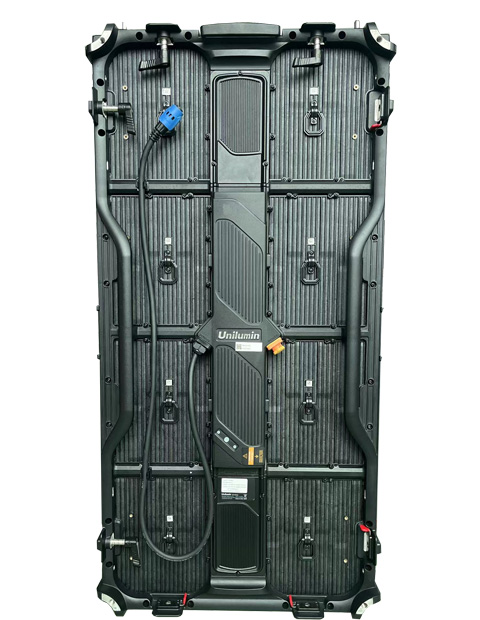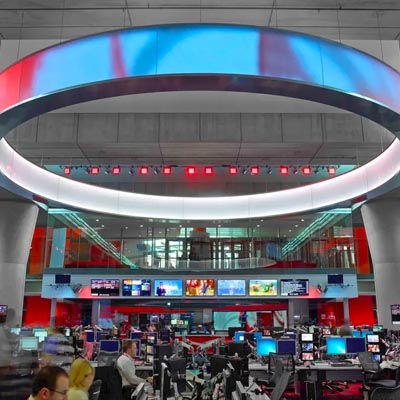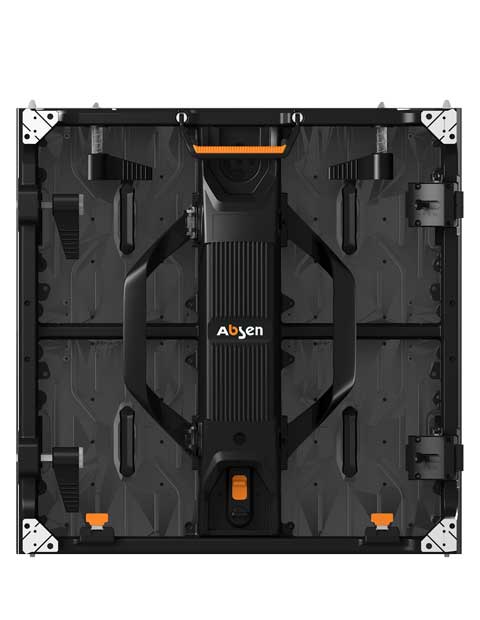Whether you’re a tech enthusiast, an LED display industry professional, or just curious about how LED displays work. Do you know the differences between SMD (Surface Mounted Device) and IMD (Integrated Matrix Device) LED screens? This post is for you. You’ll have a clear understanding of which one might best suit your needs.
What is an SMD LED display?
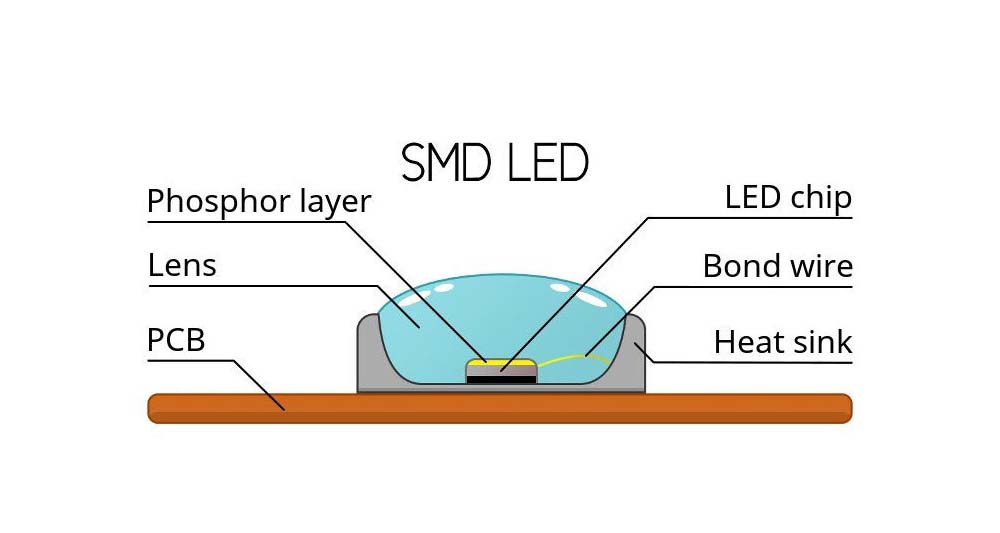
With this technology, individual light-emitting chips are packaged and then soldered onto a printed circuit board (PCB). It’s a relatively simple process that has been refined over the years to provide excellent performance in many applications.
Pros and Cons of SMD LED Displays
Pros:
- Wide viewing angle: SMD LEDs are known for their wide viewing angles. They are suitable for public displays where information needs to be visible from multiple perspectives.
- Good color uniformity: They provide consistent color throughout the display and can enhance the visual experience.
- Scalability: Suitable for a range of sizes, from small screens to large billboards.
Cons:
- Complex to repair: Due to the individual packaging of each LED, repairs can be more time-consuming and complicated.
- Density limitations: For technologies such as MiniLED that require a high number of chips, SMD LED displays have difficulty achieving the required packaging density without increasing complexity and repair challenges.
Applications of SMD LED Displays
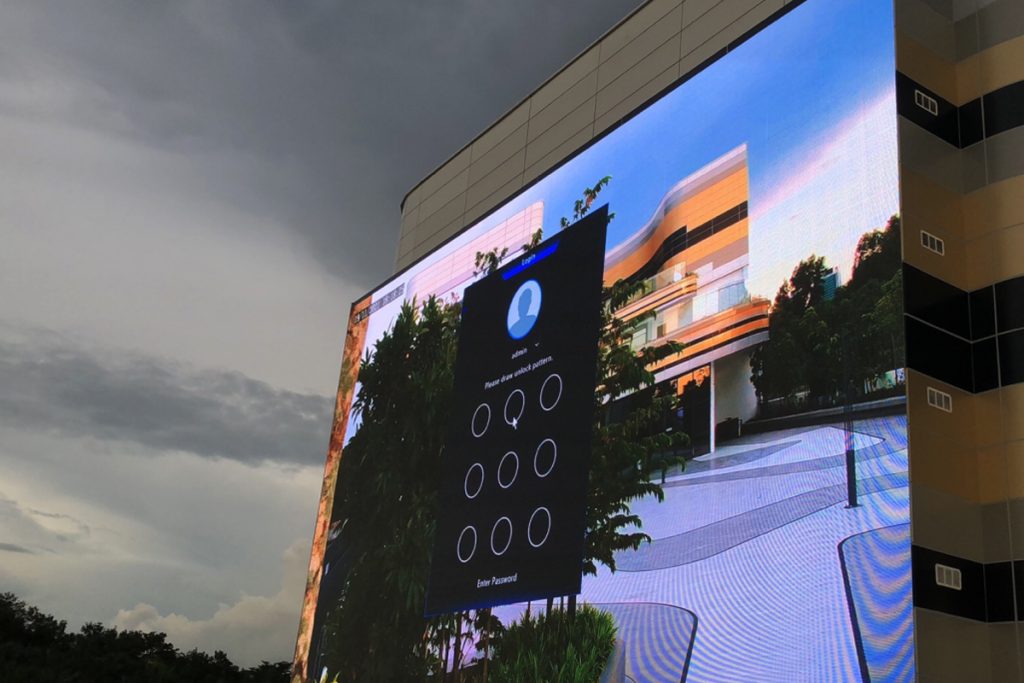
- Outdoor Advertising: Outdoor LED Billboards and large public displays often use SMD technology for its durability and visibility.
- Smartphones and televisions: SMD technology Provides the clarity and color accuracy needed for up-close viewing experiences.
- Automotive displays: Used in dashboards and entertainment systems where reliability and clarity are paramount.
What is an IMD LED display?
Shifting our focus to IMD LED displays, this newer technology packs multiple RGB chips into a single unit. It can increase efficiency and potential performance. Typical IMD packages include configurations such as 2×2 or “four-in-one” units, where each package contains multiple pixel groups.
Pros and Cons of IMD LED Displays
Pros :
- Higher assembly efficiency: IMD technology allows for faster assembly and high-volume production.
- Improved durability: The integrated approach provides better protection against shock and damage.
- High Color Consistency: It can Ensure colors appear uniform across the display. It can be used for high-quality visual applications.
Cons:
- Higher manufacturing complexity: The process involves multiple steps such as die bonding, wire bonding, and molding, each of which adds complexity.
- Limited density breakthrough: Similar to SMD, while IMD improves some aspects, it still faces challenges in achieving ultra-high densities required by some advanced applications.
Applications of IMD LED displays
- High-resolution indoor displays: IMD LED displays are used in environments such as corporate environments, control rooms, or any place.
- Luxury Retail Displays: It is Ideal for high-end retail environments. These high-quality displays enhance the customer experience.
- Advanced Home Entertainment Systems: IMD LED displays also can Provide exceptional picture quality for home theater and gaming setups.
SMD vs. IMD: Key differences
Here are the key differences between SMD and IMD LED displays:
| Feature | SMD LED | IMD LED |
|---|---|---|
| Packaging | Individual chip mounting | Multiple chips in one unit |
| Viewing Angle | Wide | Comparable, slightly better |
| Assembly Time | Longer | Shorter due to efficiency |
| Repair Ease | More complex | Comparatively easier |
| Application | Versatile, suitable for outdoor and indoor | Primarily high-end indoor applications |
Can the IMD Packaging help the mini LED display breakthrough?
IMD packaging integrates multiple related pixels in a single package based on the principles of LED display. It not only inherits the low cost and excellent color consistency of the single-chip SMD Package but also incorporates the robustness and reliability of COB packaging. The result is an IMD LED display can effectively address issues such as seamlessness, light leakage and maintenance challenges.
Cost-effective and efficient
For example, with finer pitch LED displays such as P0.9 to P0.5, the PCB can be simplified to as few as six layers in two steps, and surface mount technology (SMT) efficiency can exceed three times that of traditional SMD methods. This efficiency makes the production process faster and less expensive.
In addition, IMD packaging allows manufacturers to use most of the existing equipment used for conventional fine-pitch packaging lines. This compatibility significantly reduces the capital investment required, making it an attractive option for many companies.
Nationstar’s Journey with IMD
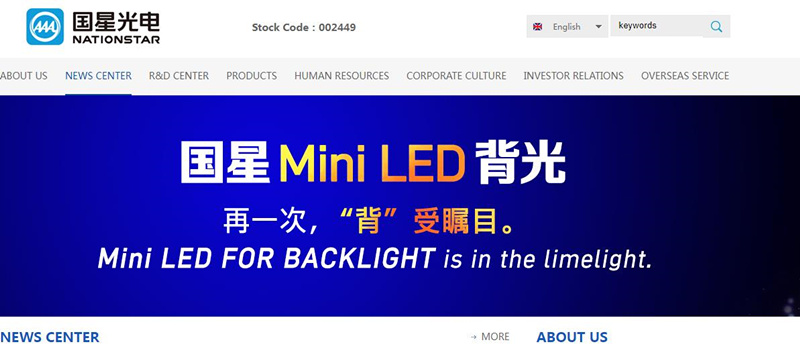
For a real-world example, let’s look at Nationstar, a leader in LED packaging. Since launching its IMD product line in 2018, Nationstar has quickly progressed to its third generation, such as:
- IMD-M09T in June 2018
- IMD-M07 in June 2019
- IMD-M05 in February 2020
They now cover popular pitch sizes such as P0.9, P0.7 and P0.5. These developments address a wide range of market and manufacturer needs, demonstrating the versatility and adaptability of IMD technology.
Real-World Applications and Success
Nationstar’s IMD technology has been widely used in significant projects. For example:
- Auto Electronics used Nationstar’s IMD-M09T for the Nanjing Public Security Bureau project in early 2019.
- Top LED display manufacturers such as Unilumin Technology and Absen have mainly used Nationstar’s IMD solutions for their mini-LED products.
The successful projects show the reliability of IMD technology.
Looking ahead
As a top used LED display leader, IAM USED LED WALL is committed to providing comprehensive, high-quality used LED display technology solutions that meet the evolving needs of the market. By focusing on high-definition LED display applications, We have a large number of advanced COB, IMD and SMD inventory LED screens to help you.
You can learm more GOB LED Display vs. COB LED Display
Conclusion
Both SMD and IMD LED technologies have their own advantages and ideal applications. If you’re dealing with outdoor applications or need a versatile solution, an SMD LED display will be a good choice. However, for high-end, high-precision, and efficient indoor applications, IMD screen offers compelling advantages.
As you can see, the choice between SMD and IMD depends largely on your specific needs and the environment. We hope this guide has helped clarify the differences and benefits of each technology.
